Oppo Find N5 review: the hottest foldable ever?
Oppo's Find N5 ticks many foldable firsts, but what's it actually like to live with?
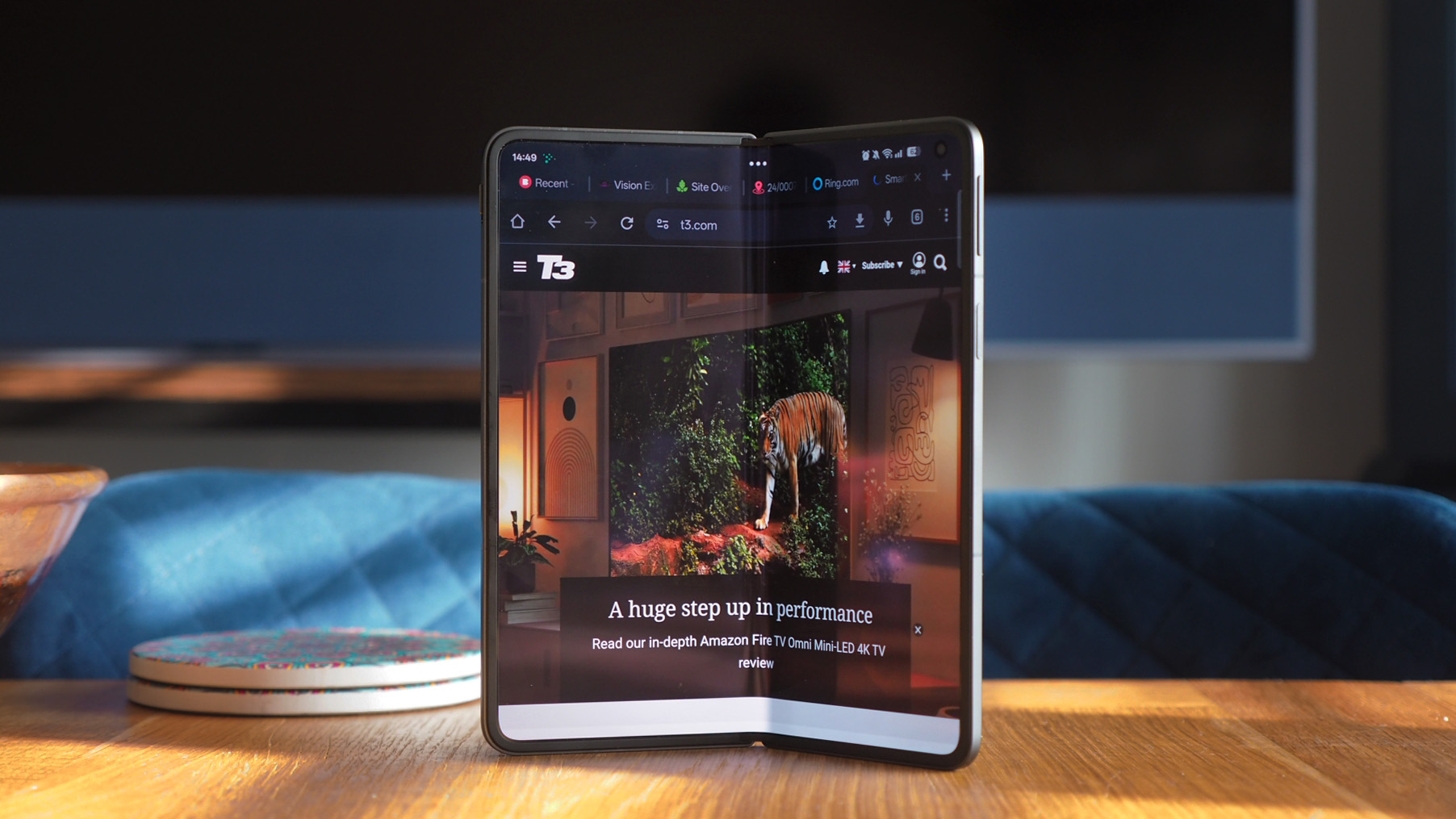
The Oppo Find N5 is undoubtedly 2025's hottest new folding phone – and with the OnePlus Open 2 now off the books for this year, Oppo is onto a winner. However, while I love many of the aspects about the Find N5, there are still those small software niggles – touch sensitivity, peculiar Themes, double app stores – that don't quite echo the design's overall finesse. That said, with battery life this good, plenty of power, and an almost impossibly thin design, the Find N5 will clearly tempt foldable fans with its undeniable accolades – if the price is right anyway.
-
+
A design so slim it feels like using a 'normal' phone much of the time
-
+
Folding display crease reduction puts it ahead of competition
-
+
Reliable battery life and decent charging speed
-
-
Folding display doesn't negate fingerprints – and crease still present
-
-
Some software oddities can dip the overall experience
-
-
Wide-angle camera not best in foldables market
Why you can trust T3
The best folding phones have gone from strength to strength over recent years – and Oppo's 2025 flagship, the Find N5, is looking to elevate the foldable format yet further.
Indeed, the Find N5, which I've been using as my own device for over a week for this review – Oppo loves to drip-feed teasers ahead of launch – is not only the thinnest book-style foldable on the market (Huawei's tri-fold Mate XT is even slimmer, unfolded), it's also got the largest foldable display of the format too, at 8.12-inches.
Those kinds of specs take the fight to Google – the Pixel 9 Pro Fold can no longer claim to have the largest interior display – while the use of Qualcomm's Snapdragon 8 Elite in a foldable for the first time sees the Find N5 even beat Samsung's rumoured Z Fold 7 to the punch there too.
All of which sounds great, but what's it like to actually live with the Oppo Find N5? I've been on a journey with this foldable, as some of what it offers can't be beaten, but other areas fail to deliver the same finesse. Here's how it all adds up.
How much does the Oppo Find N5 foldable cost?
While I've been using the Find N5 for 10 days as my own handset already – part and parcel of how we test at T3 – that's been ahead of the 20 February international launch event, which Oppo reserved as its moment to announce pricing and availability.
At this stage, therefore, pricing is just a guesstimate: I'd assume the Find N5 will go head-to-head against its Google, Samsung and Honor key competitors. I'd therefore assume an asking price of around £1,699-1,799 (it won't go on sale in the USA; Australia is yet to be confirmed). I'll update this review once the official news is revealed.
Oppo Find N5 specs
- First foldable with Qualcomm Snapdragon 8 Elite
- 16GB RAM and 512GB storage is the only version
- Thinnest book-style foldable, 8.93mm unfolded
- 8.12-inch interior display – largest of a foldable
- Reduced crease by 50% depth, 10% width
- 5,600mAh silicon-carbon battery
- 6.62-inch exterior display
- Oppo Pen compatible
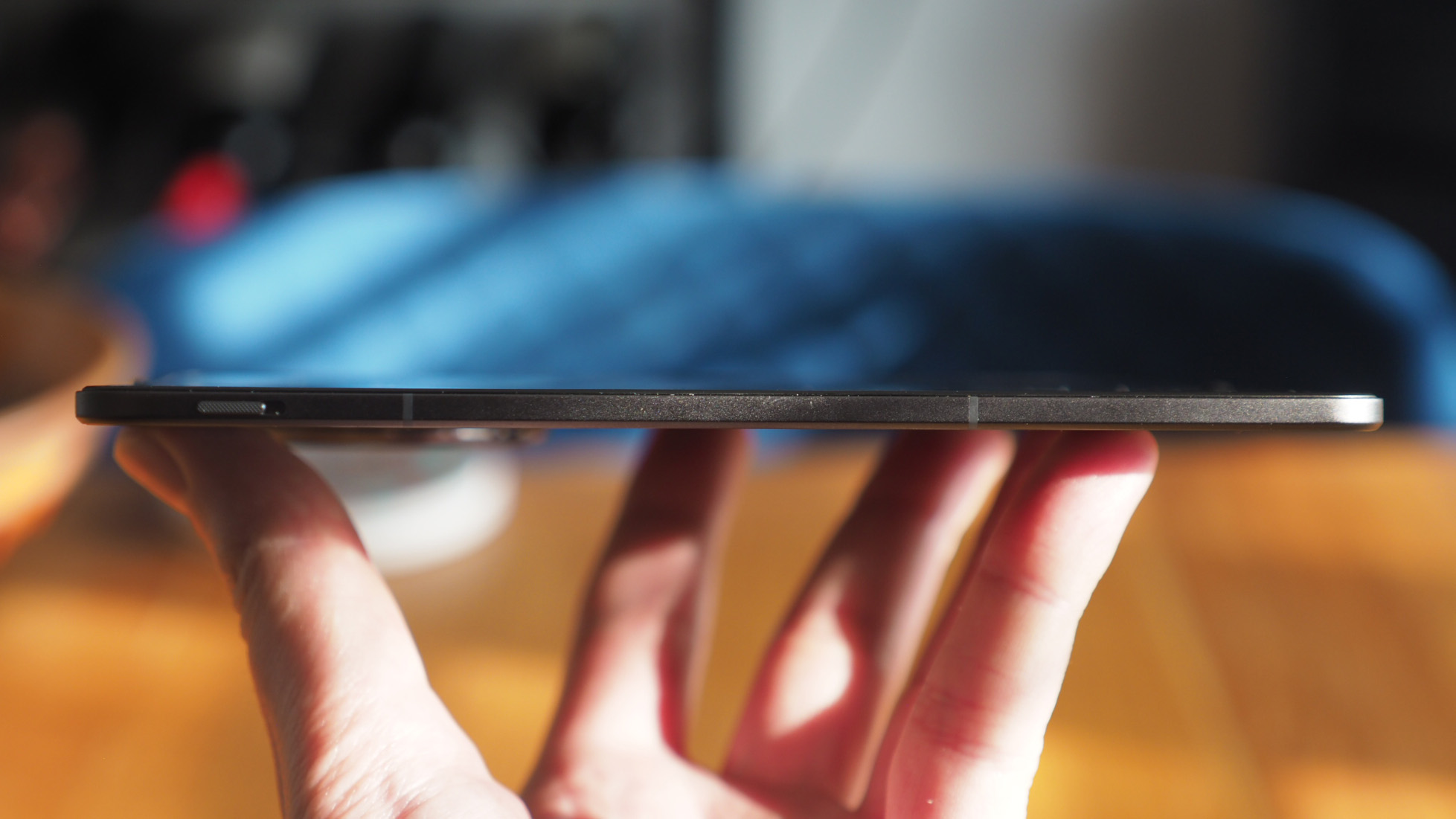
Oppo has been a big player in the foldables game: the first Oppo Find N went on sale in 2021, with the follow-up Find N3 arriving two years later, in 2023. The cadence is therefore correct for the Find N5's arrival (there was no N4, as the number four in Mandarin is considered unlucky).
So what's new in the Find N5 versus the Find N3? Well, a whole lot – and I've outlined the main points in the bullets, above. It's a new design (just 4.21mm thin when unfolded), with larger screens (6.62-inch external and 8.12-inch internal), a reduced crease for the internal display, more power, it brings IPX9 dust/water-resistance to the foldables market for the first time, upgrades the battery capacity (to 5,600mAh, but also the type – to second-gen silicon-carbon), and more.
I think a lot of people will be looking to the Find N5 as the would-be OnePlus Open 2 alternative, though. It's interesting that OnePlus has effectively stood down for this generation, opening the doorway for Oppo to occupy this foldables space without competition from its once BBK Electronics-owned ally (the umbrella company which did own Oppo, OnePlus and Vivo, but which has since dissolved and separated the three into individual entities).
How good are the Find N5's two displays?
- External display: 6.62-inches, 20.7:9 ratio
- 2616 x 1140 resolution (431ppi)
- 1-120Hz variable refresh
- 2450 nits peak HDR
- Internal display: 8.12-inches, 9.9:9 ratio
- 2248 x 2480 resolution (412ppi)
- 1-120Hz variable refresh
- 2400 nits peak HDR

It's no surprise that Oppo is shouting about how slender its new foldable is: at 4.21mm when unfolded, there's nothing of this type that can compete. I certainly respect that, but quite honestly it doesn't make a giant difference in use. By the time I had the included case attached the device was about as large as my Pixel 9 Pro Fold. There's a magnetic case, sold separately, for wireless charging (AirVOOC is up to 50W).
That said, with its more slender build – and Oppo has used some carbon fibre alongside 7000 series aluminium internally, plus it's shrunk the hinge compared to the Find N3 by 26% – the reduced weight can be felt. Sure, it's less than 30g between them, but it does make a difference in the experience, and I've tested the two side by side during this review process.
There's been a lot of to and fro in the foldables world when it comes to displays' aspect ratios. Samsung has stuck staunchly with its slim-yet-tall front display (at 22.1:9 in the Z Fold 6), while over time other makers have begun to adopt wider, more traditional front display formats. There are arguments for both being best, with Oppo sitting in the middle – as the Find N5's 20.7:9 aspect ratio is close to the 20:9 'standard'.
For me, I find the screen a mite too elongated and tall, but it's still comfortable to use one-handed – and as it's obviously not too thick of a device, that helps with a balanced feel. However, as that screen is so close to 'normal', just as I found with the Google Pixel 9 Pro Fold, I've often simply not thought to unfold it. Herein lies the foldables conundrum – and such is the reason that Samsung opts for its less wide design, to prompt use of both screens with added purpose.
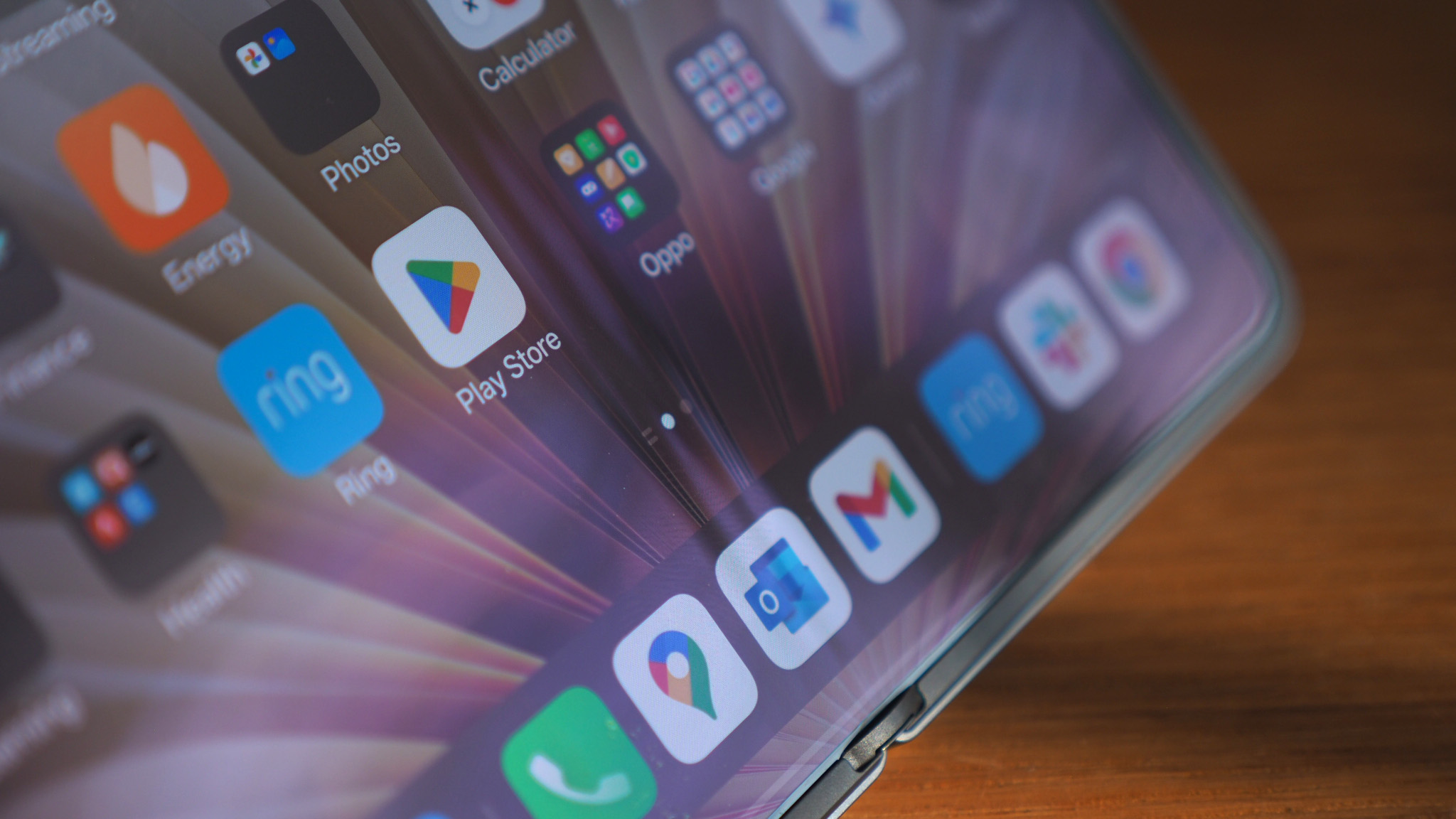
When you do unfold the Find N5, however, it's undeniably impressive. Oppo has put a lot of research and development work into this 8.12-inch panel, which is the largest internal display of any foldable. It's also got the least noticeable crease down the centre of any that I've tried out – and that's basically all of them to date – which is often cited as one of folding phones' biggest drawbacks.
However, there is still a crease – as there's a hinge mechanism it's undeniable that it'll continue to exist at this stage. Face-on, I really don't think you'll notice it much at all, though, with only bright light sources and steeper angles of view really showing it up – which passersby are more likely to spot than yourself, frankly. But the other point about foldable displays that I do find frustrating is just how badly they pick up fingerprint smears – and the Find N5 suffers from this just as poorly as any other.
The internal display is close to a square ratio, at a 9.9:9 aspect, so again it's similar to Google's approach. It's ideal for Instagram, obviously, but the odd thing about an almost-square display is that not much content is designed for it. Yes, there are left-to-right screen-split benefits for certain apps, such as Outlook or Gmail, but other than the additional real estate, it's not always a win – even with Netflix, the black bars are considerable and the content only marginally larger, for example.
How does the Oppo Find N5 perform?
- Qualcomm Snapdragon 8 Elite (7 core version)
- 16GB RAM (LPDDR5X), 512GB storage (UFS 4.0)
- 5,600mAh silicon-carbon battery (2nd gen)
- 50W AirVOOC wireless via optional case
- 80W SuperVOOC fast-charging
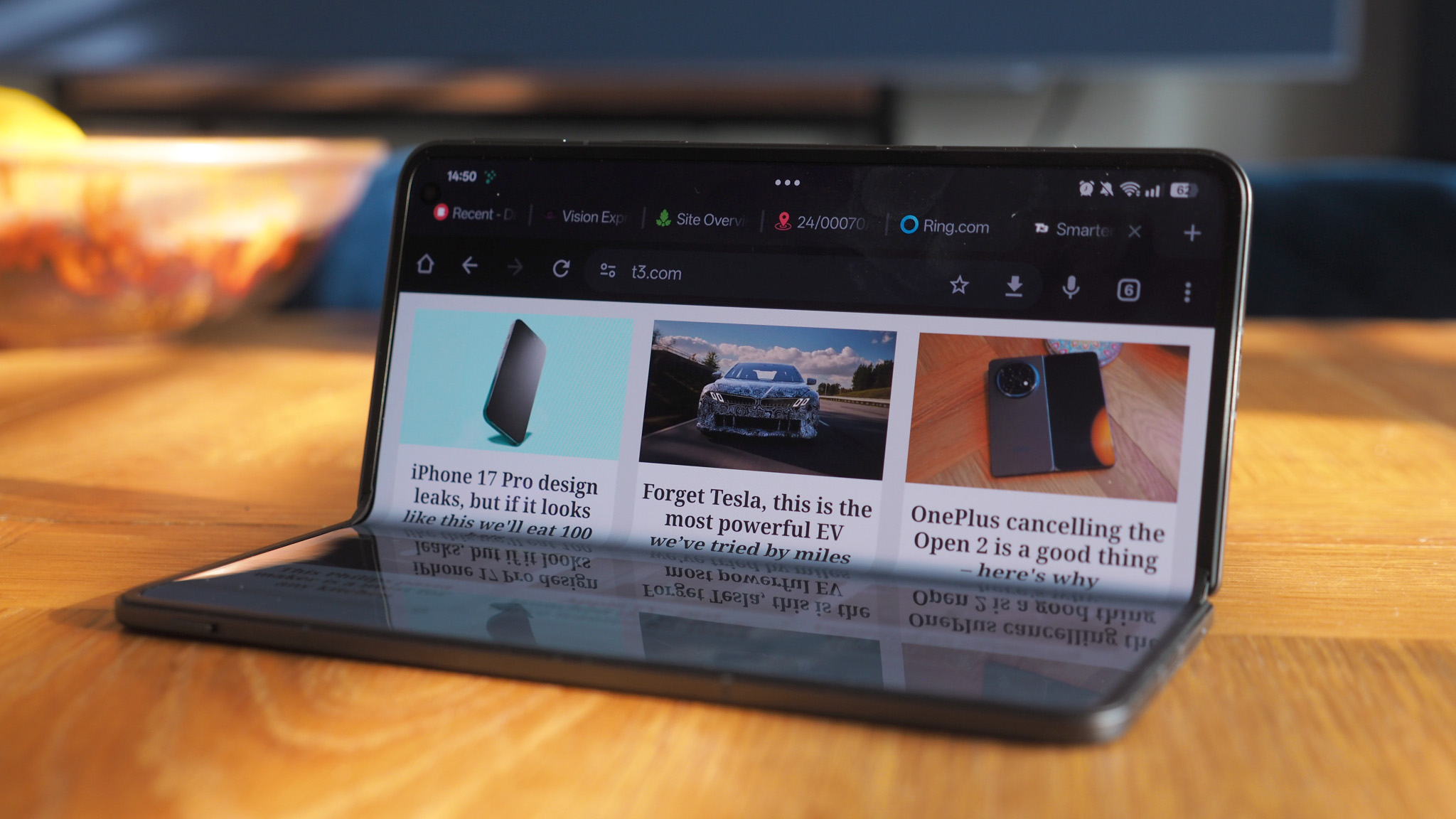
Oppo is quite wise with its software, though, with ColorOS 15 providing the ability to open two apps side-by-side by simply clicking the triple-dot menu to the top of any open app (only when in the unfolded position). A third app can also be opened, which sits below the other two, akin to two desktops on a laptop.
A four-finger pinch action can display all three open apps in Full View mode, where you can continue to interact with them – as miniature as these apps then appear. You can even opt for a Floating Window per app instead (up to two at once), which can then be miniaturised to a floating app symbol as to not get in the way. It can get a bit busy, and takes some getting used to, but it's really pushing the foldable format's potential benefits.
It's in other areas where the software just isn't so rewarding though. The prompts to update apps in both Google and Oppo app stores. The frankly bizarre default themes – in Dark Mode, my Gmail read versus unread emails almost look the same, as if I were colourblind. The jarring randomisation of keyboards – where Gboard opens in one scenario, it won't (or in the same format) in another (triggered by secure sign-in, I believe), making for sometimes confused typing experiences.
I've also found the touch sensitivity of the display somewhat hit and miss, reluctant to always register – which I'm assuming is also a software thing (likely accidental touch prevention, best as I can deduce). But that and the above foibles all add up and, in my view, offset the finesse of an otherwise highly accomplished product's design.

In terms of ability, however, there's no question over how well the Find N5 can perform. Oppo's decision to select a 7-core version of the Qualcomm processor is interesting, as it's marginally less powerful than the norm – and puts a question mark over what 8 Elite really means (as there's a more powerful 'for Galaxy' version in Samsung's S25 Ultra) – but I really don't think you'll know in actual use.
As I've outlined above, you can run three apps simultaneously on screen, so this Oppo really isn't compromising. The 16GB RAM will certainly have significant bearing on this ability to keep multiple apps open and operating to their fullest, while an oft-used expansion technique adds a further 12GB from the 512GB storage (opening up 28GB total, albeit not all the same speed – the 16GB RAM is LPDDR5X, which is faster than the storage's UFS 4.0 type). Still, it's impressive.
Personally, I don't run many apps side-by-side on the one screen. But I do run full-screen games on that massive display, which can transform their experience for the better. My go-to, South Park: Phone Destroyer, feels more like playing on a tablet. It runs smoothly, too, as you'd expect from a processor and RAM combination such as this. However, you may need to adjust settings for idle and lesser-used apps to ensure they're not put into sleep – a (sensible) other feature of the software that requires a little manual intervention here and there.
Battery life is a cut above, though, thanks to Oppo utilising second-gen silicon-carbon battery technology, meaning greater density is possible in a smaller cell than a lithium-ion equivalent. Here it's a 5,600mAh capacity, well beyond the norm, which I've easily been getting a full day of use from – I failed to charge it one Saturday night and it continued through to late next morning.
What about the Find N5's cameras?
- Hasselblad Master Camera system with HyperTone Image Engine
- 21mm main: 50MP (LYT-700 sensor), f/1.89 aperture, optical stabilisation (OIS)
- 70mm zoom: 50MP (JN5 sensor), f/2.7, OIS
- 15mm wide: 8MP (1/4in sensor), f/2.2
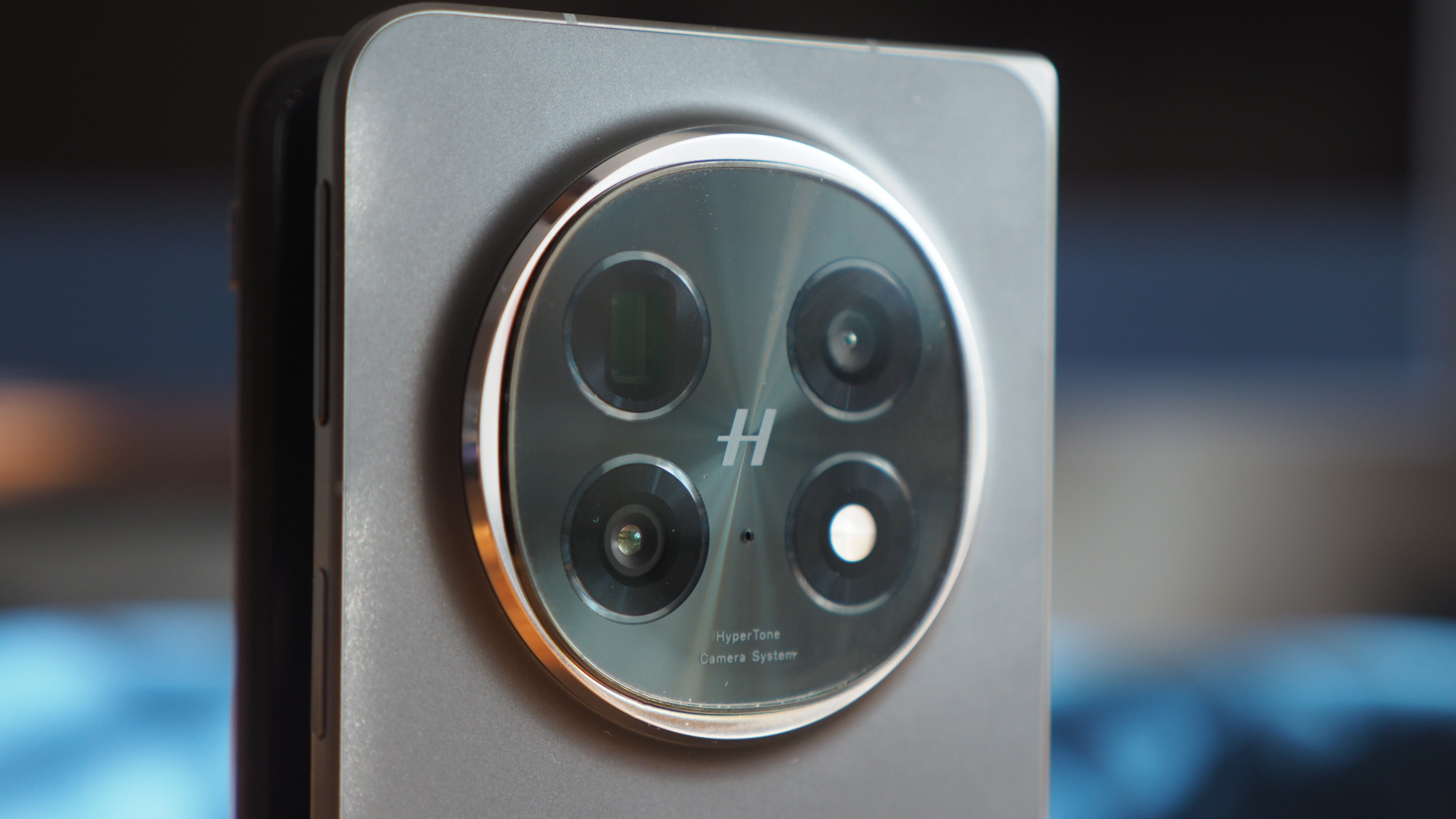
On the rear, the Find N5 has a familiar circular camera enclosure. This is the design language that's been widely adopted by Chinese phone-makers of late, from OnePlus to Huawei, Honor, Xiaomi and, of course, Oppo itself. It's a divisive look, with many calling it out for being too huge, but I'm now used to the look. Fortunately the Find N5's bump adds less to the device's width than many with more advanced cameras.
But therein lies the compromise: like many foldables, the Find N5's key focus isn't on delivering the very best cameras available today, but in finding the right balance of quality to physicality. After all, smaller sensors don't require as significant a distance from their surfaces to their lenses, which means the overall package can be more compressed. Still, Oppo has managed to deliver a trio – including a periscope zoom – with only the wide-angle camera going low on the resolution front (it's 8-megapixels; the other two are 50MP).
In terms of performance, the Find N5 is fairly well balanced – even if I couldn't call these the best cameras of any foldable right now (they're a step down from Oppo's Find X8 Pro, for example). Part of the success is Oppo's ongoing Hasselblad partnership, delivering a level of quality and adding to software shooting options too – from filters, to Portrait mode.


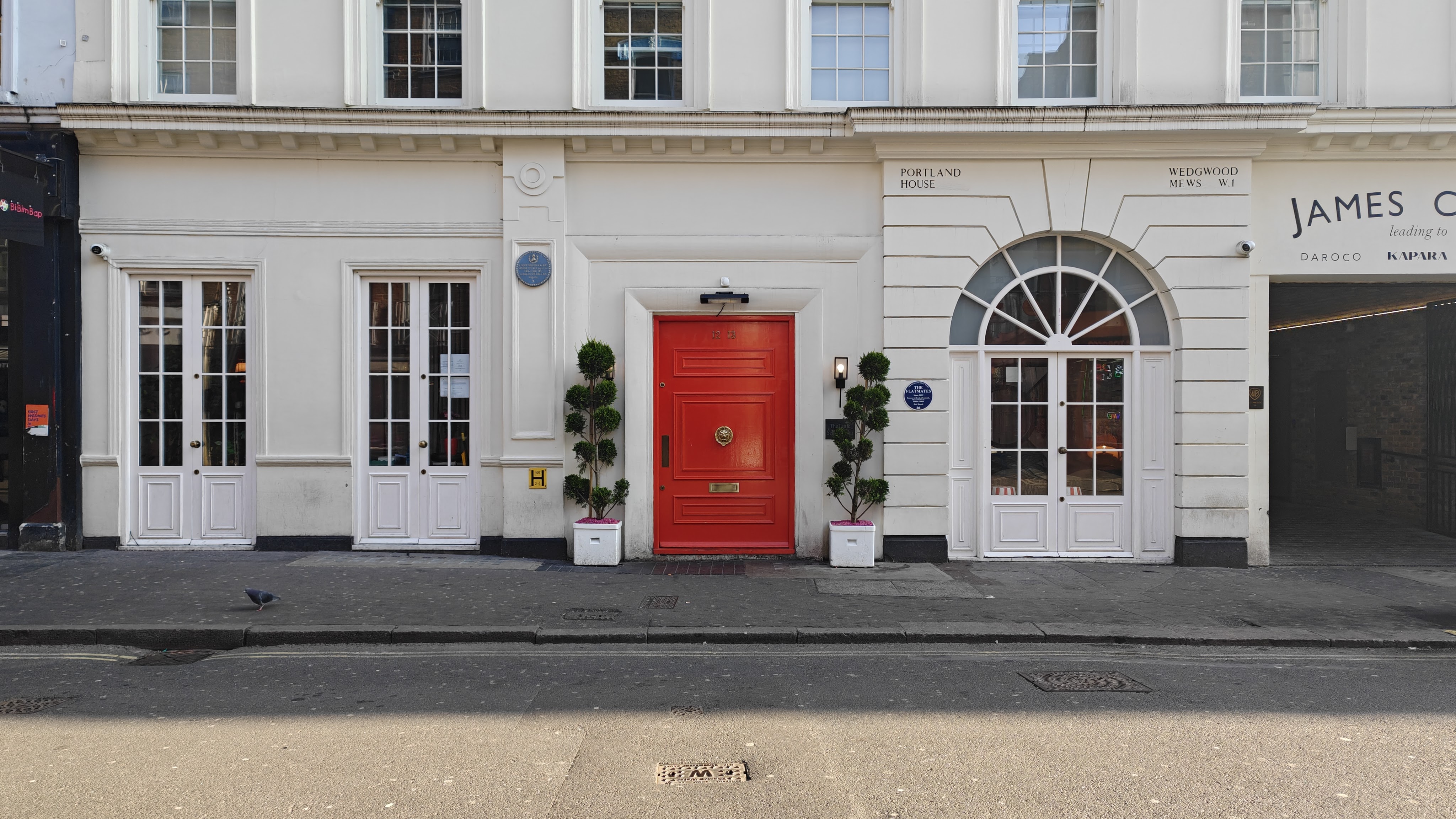





It's mainly the wide-angle that's the lowest common denominator, though, with a lack of bite owed to the low resolution. The other two lenses hold up well, and I'm really pleased there's a proper zoom here – it's around a 3.3x magnifier compared to the main lens, which really opens up shooting opportunities. You can push beyond that with a 6x digital zoom, too.
I've shot a variety of pictures, as you can see in my gallery above, both in daylight and at night. The colours pop nicely, even when the light dims, although shooting handheld in low-light conditions is a little trickier to get the sharpest of results. The Camera app also jumps between on-screen exposure levels after shooting, which can be a little irksome. There are handy features, though, such as face detection for quick focus and exposure adjustments – and even 'beauty' retouching if you want to look, er, smoother(?).
Currently folding phones seem to be taking the stance that cameras are important but not the most important aspect of such a device. I feel the Find N5's focus on its slender build and new hinge is indeed its biggest appeal. That Oppo has managed to deliver decent enough cameras within that structure is an accomplishment in itself – even if the wide-angle isn't anything special.
Oppo Find N5 review: Verdict
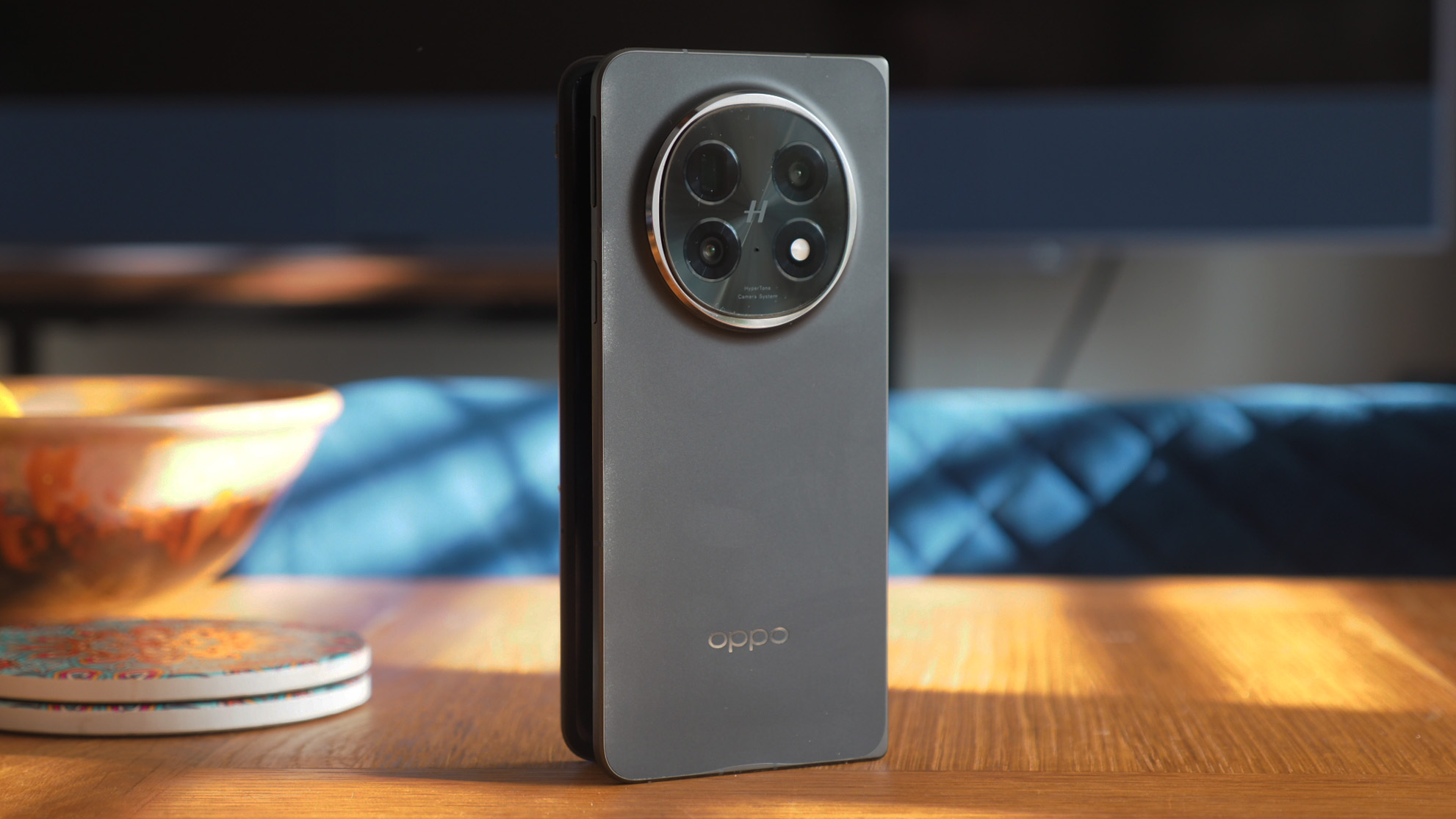
The Oppo Find N5 is undoubtedly 2025's hottest new folding phone – and with the OnePlus Open 2 now off the books for this year, Oppo can spread its wings and reach even more prospective users.
It's an impressive device both from a specification aspect and in use. However, while I love many of the aspects of the Find N5, there are still those small software niggles – touch sensitivity, peculiar Themes, double app stores – that don't quite echo the design's overall finesse.
All in all, if the price hits right, Oppo is clearly onto a winner in the Find N5. It's a folding phone monster that packs plenty of muscle – impressive battery, power, the biggest screen and smallest crease going – into an almost impossibly thin body. Your move, Samsung, et al.
Also consider
It was interesting news when OnePlus revealed that it would not be releasing a OnePlus Open 2 in 2025 – a phone that would likely have been a Find N5 doppelganger, but presumably with less on-board storage and a lower price. But, no, it won't exist this year (or possibly ever?) – which gives the Oppo even more purpose in this foldables market.
Looking to its left and right, however, the two obvious competitors are Google's Pixel 9 Pro Fold and Samsung's Galaxy Z Fold 6 – the former with better Android software finesse (although not doubling down on foldable specific software features, really), the latter with a more slender front screen, providing a different feel and experience. Or, if you can accept various similar software shortcomings, then Honor's Magic V3 is the next-thinnest foldable competitor to contemplate – perhaps on a price basis, if there's a good offer.
Sign up to the T3 newsletter for smarter living straight to your inbox
Get all the latest news, reviews, deals and buying guides on gorgeous tech, home and active products from the T3 experts

Mike is T3's Tech Editor. He's been writing about consumer technology for 15 years and his beat covers phones – of which he's seen hundreds of handsets over the years – laptops, gaming, TV & audio, and more. There's little consumer tech he's not had a hand at trying, and with extensive commissioning and editing experience, he knows the industry inside out. As the former Reviews Editor at Pocket-lint for 10 years where he furthered his knowledge and expertise, whilst writing about literally thousands of products, he's also provided work for publications such as Wired, The Guardian, Metro, and more.
You must confirm your public display name before commenting
Please logout and then login again, you will then be prompted to enter your display name.
-
 Google just added a new Gemini video creation tool I never knew I needed
Google just added a new Gemini video creation tool I never knew I neededGemini Advanced just added Veo 2 video generation
By Mike Lowe Published
-
 One of the best villains in gaming is coming to Xbox Game Pass for free
One of the best villains in gaming is coming to Xbox Game Pass for freeAll Game Pass subscribers are getting one of the best single-player shooters of the decade
By Rik Henderson Published
-
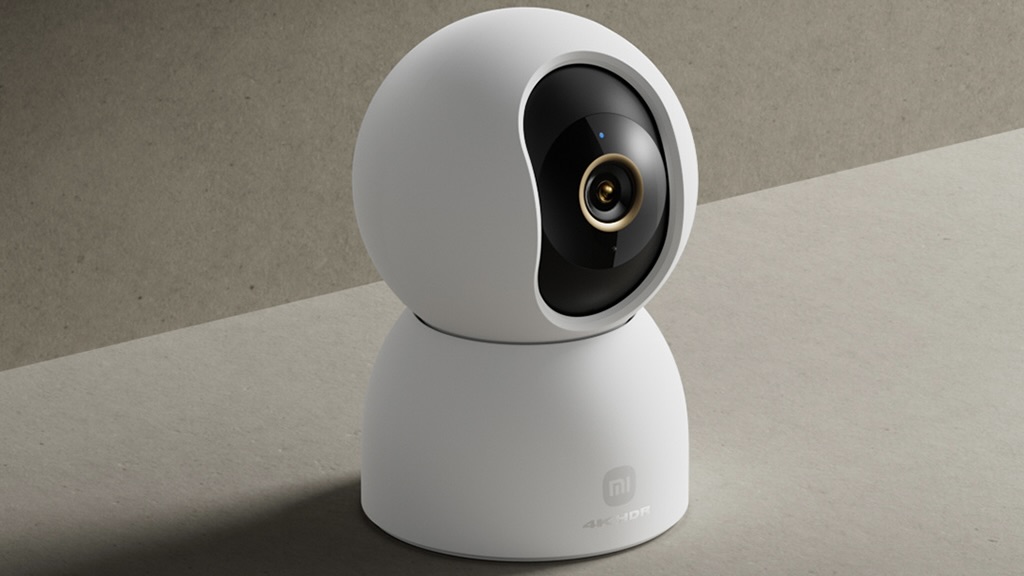 Xiaomi’s next indoor smart security camera could be its most affordable yet
Xiaomi’s next indoor smart security camera could be its most affordable yetIt's less than $40...
By Lizzie Wilmot Published